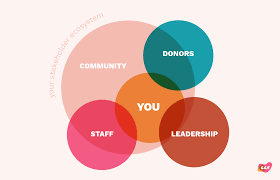Declining charitable giving - our answer to the giving gap
- Leigh Sandison
- May 30, 2023
- 3 min read

If you’re anything like me, you know where your money goes monthly because money is tight and there are bills to pay, RRSPs to contribute to, food to buy and charities to donate to. When times are tougher, we cut back on nice-to-haves and focus on necessities.
This leads to a big question. At what point in the donor’s journey is a regular (monthly or annual) gift considered a necessity? When do we get out of the nice-to-have bracket?
For some, the answer may be ‘never’, but at Real Path, we think that more non-profits can slot themselves safely into the 'must' category earlier in a supporter’s journey by appealing to two parallel paths of need.
The first is the straightforward need that non-profits have - to support their beneficiaries. The second is more elusive, but it matters to the donor's ‘necessity’ versus ‘nice to have’ internal debate. It is about appealing to the core values of a donor and their 'better self'. Allowing the donor to be the person they aspire to be when they are making donations. Charities can help themselves by helping their donors be the best version of themselves.
This year’s giving report from CanadaHelps had a call to action ‘to Canadians of all ages to protect our charitable sector through greater engagement and financial gifts’. CanadaHelps discusses the ‘giving gap’ which shows the steady decline in the percentage of Canadians donating to charities. In 2006 the percentage of Canadians giving was 25%, in 2019 that dropped to 19%. We fear the drop since COVID.
The really tough part of that drop is that the steepest decline was for 40-54 year olds and families in higher income brackets. That wasn’t a typo: charitable giving declined the most in families with higher incomes. That is a very sad fact and puts us as fundraisers and fundraising strategists in a daunting position.
It’s a major problem for the sector, with some of the biggest organizations across the world taking dramatic steps to be less dependent on individual donors to ensure they can survive past the giving Boomers generation.
People demand so much more from charities than they do from for-profit companies. The media can paint the sector with a single brush that takes years for an average person to forget (think the We scandal). Some people are trapped in ideas that charities are only successful if they have low overhead and high program spending, instead of focusing on the impact they’re having. There are easy ways for an average person to rationalize not giving, and when you combine skyrocketing grocery prices, an unknown market ahead of us, and fear about the future, it’s easier than ever.
At Real Path, we want to be part of the solution, a critical change that’s required, to make charitable giving not an afterthought, not a nice-to-have, but part of the DNA of a person, a community, a city, a country. We believe that over the next few years and decades, we can help be part of a major shift not for just our clients but for the sector at large.
A critical required change that Real Path is laser-focused on is ensuring that Canadians can support non-profits extremely easily and have fantastic supporter journeys and donor experiences. Journeys that make them understand their impact, become life-long donors, and be part of making a better Canada and a better world. Experiences that rival for-profit companies because they help people be the versions of themselves they want to be, and inspire others to join them in that pursuit.



Comments